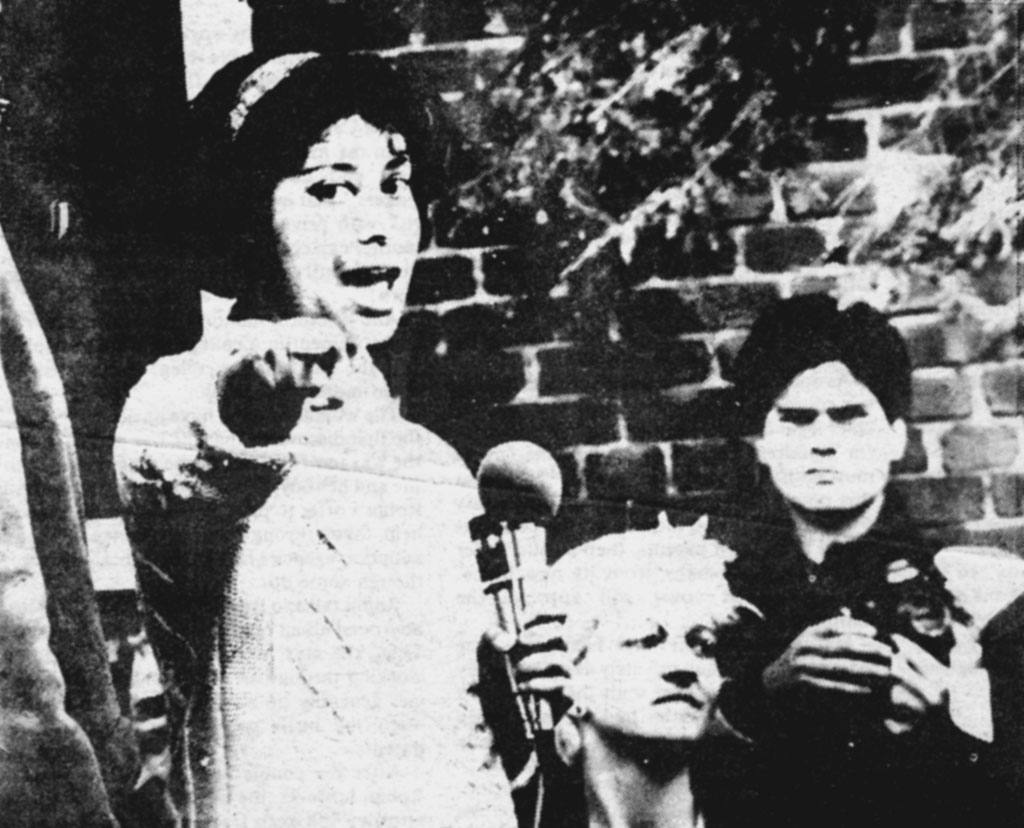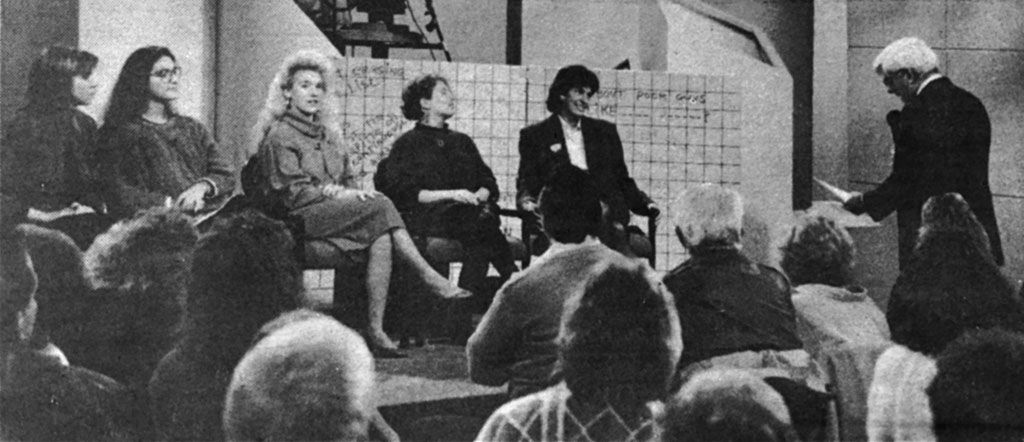
On May 2, 1985, about 250 women gathered around Pembroke Hall and marched to Wriston Quad to hold a demonstration on sexual harassment and violence on Brown’s campus. The protest was organized in response to the interpreted leniency concerning harassment on campus and how the fraternity system perpetuated sexism, racism, homophobia, and rape.
Frustrations arose over the changing appearance of a fraternity symbol. It was rumored that the symbol was painted differently every time a woman lost her virginity to a member of the fraternity. Though fraternity members denied it, women argued that the presence of the toad on campus perpetuated the rumor. During the demonstration women wore pink arm bands which symbolized their defiance of sexism and violence. Women formed a semi-circle, spreading outward from Wayland Arch, and screamed. For the next few hours, 120 women stepped forward to speak and share personal experiences of rape and harassment on campus. About 15 men were there in support. Protesters demanded the expulsion of certain fraternities from campus; removal of derogatory symbols promoted by fraternities; for fraternities to sponsor self-education forums on feminist, gay and Third World issues; a sexual orientation clause to be added to the nondiscrimination policy; for the University to offer free courses in self-defense; and to diversify the University Council of Student life.
Women were fed up with being silenced and used different platforms to voice their outrage over the campus’ complacency towards acts of sexual harassment, discrimination and violence. Instead of participating in the speak-out, other women submitted letters to the Brown Daily Herald. Joan Cummins ’87 addressed the blurred line of threatening versus “good-natured, non-violent” harassment and how it was dehumanizing to be objectified. An opposing point of view was put forward by another female student who asserted that “when individuals commit acts of sexual assault, they should be punished…not entire organizations.”
Instead of a supportive, or an apologetic, response towards the women who held the demonstration, a majority of the fraternities either responded crudely or not at all. After several staged confrontational acts, two fraternities were immediate expelled from Wriston Quad and one lost their charter as well. Throughout this period, many fraternity brothers vocalized their outrage about the expulsion and the women’s speak-out protest: “[Sexism] is a part of life…because we have a t-shirt [the Kappa T-shirt mentioned earlier] they hold us responsible for violence against women in the world”; “Whoever bitches the loudest gets what they want.”
At 12:30 a.m. on May 11, 1985, 250 students, most of them fraternity members, demonstrated outside of President Howard Swearer’s home. Swearer eventually emerged, entered the crowd, and engaged in a heated exchange with students for about 30 minutes. In response to this, Swearer stated, “In any situation with students, whatever it is, the University tends to treat students with kid gloves as long as they do not disrupt the University in any way that’s been harmful…we’ve drawn a line.” Although the administration took action against some fraternities, many still criticized Brown’s lackluster punishment and the institution’s leniency towards sustaining sexism on campus.

During the fall of 1990 female students still felt University administration was not taking action against reported assaults on campus, so they started writing the names of alleged campus rapists on the bathroom walls at the John D. Rockefeller, Jr. Library. The list grew as more women spoke out; at least thirty names were listed on the wall. In 1991, the “Rape List” became nationally recognized by the media after appearing on the Phil Donahue Show. A member of the audience, Carrie Schroeder ’93, said, “Donahue was deliberately trying to be divisive. In that we didn’t get a chance to say we like Brown and we like being at Brown. We just want to make it better.” The Brown Daily Herald published President Gregorian’s letter in response to climate on campus. “The current controversy on our campus involves two issues. One is sexual assault—a national tragedy and a disgrace that must be condemned without hesitation and ambiguity. The second issue involves the deliberate use of anonymous graffiti to defame” instead of coming “forward promptly before either the University authorities or civil ones to take action.”
“A lot of frustration had built up,” said Juliet Brodie ’85, a protester who last spring was chosen as a panelist for an ABC-TV Nightline program devoted to the rebirth of student activism. “What happened [that Thursday] was a collective voice saying, ‘This must stop. It’s terrorism…'”
—Brown Daily Herald, 6/1/85
